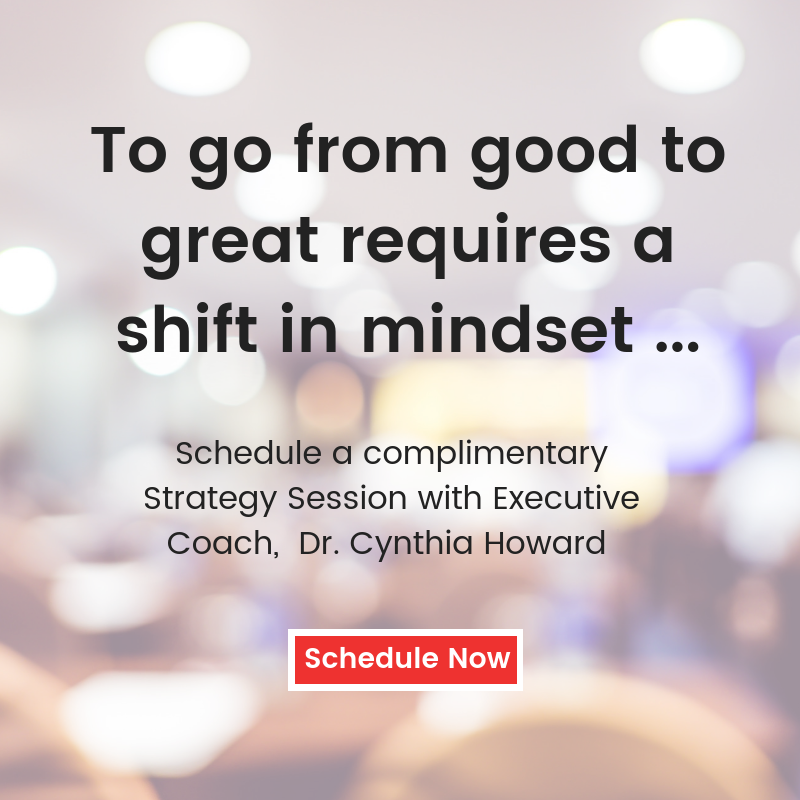
3 Mindset Shifts to Transition From Manager to Leader
To lead or manage is an important question. It is not an either or question; to get results, you need to do do both. they require different skills and mindset.
Most begin their careers as managers. Management skills focus on making sure daily responsibilities are met, resources are utilized, and people are doing their jobs. As a manager, one organizes activities and people to achieve specific goals. Planning, organizing, resource management, facilitating, decision making are part of the management skills needed to achieve your goals.
Distraction is the new normal, communication breaks down with digital intrusion, more teams are virtual, the workforce is multi-generational; it is essential to leverage your presence as the manager.
Not all managers will transition to a leader. It requires a personal commitment to growth and excellence. Remember, leadership, like management, is learned.

Transition from Manager to Leader: 3 Mindset Shifts
1. Leaders manage their energy; managers manage time.
We need to have goals and priorities to be successful. This is part of managing your time and resources. This will help you get more done; it isn’t enough to be effective. To be effective, you want to manage your energy. This means you learn to focus your attention, identify what is most important for you and follow a strategy that helps you achieve it. This mindset shift highlights an early transition from a manager to a leader. Managing your energy requires you to be self-aware and make the daily choices that helps you be most effective.
2. Leaders coach; managers direct.
Coaching is the new leading. This sounds like a cliché; let’s break it down. To get it all done, you need to leverage you. This means you develop and empower your team to be as competent as they can be. You cannot control their behavior or do things for them. As a leader, focus on outcomes.
Coaching is a way of engaging people through questions and guidance that encourages them to develop their strengths and find solutions.
Let’s say one of your direct reports comes to you with a problem, it is easy to tell them how to solve that problem. In your mind, you may even tell yourself, “at least I know it will be done right,” and while you may have saved time and potential mistakes by doing this, you have taught your direct report to keep coming to you to solve all their problems!
In this example, your team becomes dependent on you to solve their problems. For some, being needed feels good. It may also create a false sense of security that people won’t leave. What is happening may be a surprise to you!
I have learned that people who are dependent end up developing resentment toward those they depend on. It becomes a vicious cycle, the more you try to pull away from that dependent person, the more they feel angry. This makes it essential to have a plan to empower your people to transition from solving their problems.
I help my clients set up a strategy to move from directing people to coaching. Empowering people begins with the understanding you will not be solving their problems and that this is not personal; you are not abandoning them. I use the Innovation Lab, a system of problem solving and incremental change. This teaches lean sigma tools, giving your team skills and empowering them to solve problems. It is powerful.
3. Leaders are catalysts; managers maintain.
This mindset shift recognizes it is you and your behavior that triggers positive (or negative) change. This level of self-awareness is a critical foundation of exceptional leadership.
The leader as a catalyst is asking questions, pushing people to perform at their best, rejecting complacency. This doesn’t mean you are driving people to exhaustion! It means you know it can always be better, and it is worth the effort to improve.
Let’s talk about this. When I suggest to leaders, they push their people to go beyond, many leaders have said, “my people already work so hard, I do not want to put more on them.” That is a mindset that maintains the status quo and is missing an opportunity. Pushing your people to go beyond doesn’t mean asking them to work longer, more weekends or without lunch breaks. It means asking them to think about how they can add more value to what they are doing.
People come to work with the intention of doing their best job. Most people do not feel they use their full potential at work and end up slowing down out of frustration. Encouraging people to be creative will engage their best assets.
If you are not getting the results you want, it is time to think about making a commitment to developing you and pursue leadership skills. Not only will your outcomes improve, you will find a new sense of purpose and meaning in your work.
About the Author Cynthia Howard RN, CNC, PhD
Performance Consultant. Unleashing potential in leaders and organizations through innovative performance development.

